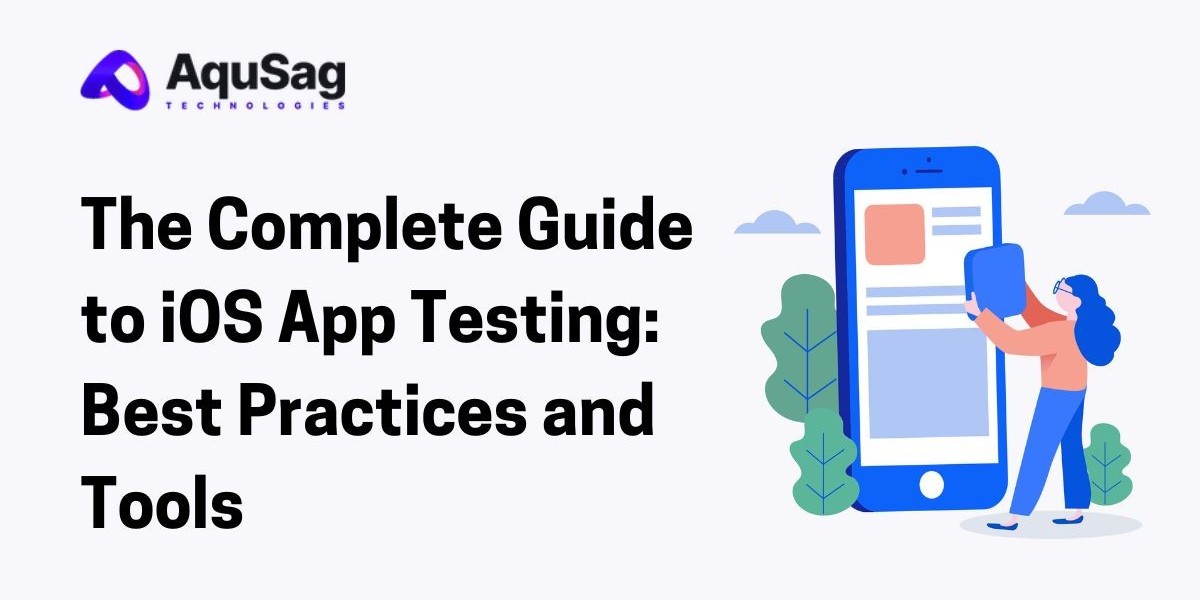In the rapidly evolving world of mobile apps, ensuring the quality of your iOS app is crucial to its success. With the growing competition in the App Store, users have little patience for apps that crash, freeze, or fail to perform as expected. That's where iOS app testing comes into play. This guide will walk you through the essentials of testing iOS apps, covering best practices, key tools, and tips to make your app robust and user-friendly.
Why iOS App Testing is Crucial
Testing your iOS app thoroughly is not just a good practice—it's essential. Here’s why:
User Experience: A smooth and bug-free app keeps users happy and engaged.
App Store Approval: Apple has strict guidelines. A well-tested app is more likely to be approved quickly.
Brand Reputation: Bugs and crashes can damage your brand’s reputation, leading to negative reviews and loss of trust.
Cost Efficiency: Catching bugs early in the development process is far more cost-effective than fixing them post-launch.
Types of iOS App Testing
To ensure comprehensive coverage, it’s important to perform various types of testing. Here are the key ones:
1. Functional Testing
Ensures that the app’s features work as expected.
Involves testing user interactions, data handling, and integration with other services.
2. UI/UX Testing
Focuses on the app's interface and user experience.
Ensures that the app is intuitive, accessible, and visually consistent.
3. Performance Testing
Assesses the app’s speed, responsiveness, and stability under different conditions.
Important for understanding how the app performs under load, during peak usage times, and on various devices.
4. Security Testing
Ensures that the app is secure from vulnerabilities and protects user data.
Involves testing for data encryption, secure storage, and compliance with privacy laws.
5. Compatibility Testing
Verifies that the app works on all supported devices, screen sizes, and iOS versions.
Especially crucial in the fragmented ecosystem of iOS devices.
6. Automated Testing
Involves writing scripts to automate repetitive tests, saving time and reducing human error.
Ideal for regression testing, where changes in the code need to be tested repeatedly.
Best Tools for iOS App Testing
Choosing the right tools can make or break your testing process. Here are some of the best tools for iOS app testing:
1. XCTest/XCUITest
Best For: Native iOS apps.
Features: Built-in with Xcode, allows for both unit and UI testing.
Pros: Seamless integration with the iOS development environment.
2. Appium
Best For: Cross-platform testing.
Features: Allows for automated testing on iOS and Android.
Pros: Open-source, supports multiple programming languages.
3. TestFlight
Best For: Beta testing.
Features: Apple’s official beta testing tool, allows you to distribute your app to testers easily.
Pros: Direct integration with the App Store.
4. Firebase Test Lab
Best For: Testing on a variety of devices.
Features: Cloud-based, provides access to a range of iOS devices.
Pros: Scalable testing without needing physical devices.
5. Charles Proxy
Best For: Network testing.
Features: Allows you to monitor and manipulate network traffic.
Pros: Helps in testing how the app handles various network conditions.
Best Practices for iOS App Testing
To make the most out of your iOS app testing, follow these best practices:
Start Early: Incorporate testing from the early stages of development.
Automate Where Possible: Use automated tests to cover repetitive tasks and save time.
Test on Real Devices: Emulators are useful, but nothing beats testing on actual devices.
Focus on User Experience: Ensure the app is not only functional but also delivers a great user experience.
Continuously Test: Make testing a part of your CI/CD pipeline to catch issues early.
Conclusion
iOS app testing is a critical step in delivering a high-quality app that meets user expectations and complies with Apple’s stringent guidelines. By following best practices and leveraging the right tools, you can ensure that your app is robust, secure, and ready to shine in the App Store.
Start implementing these testing strategies today to boost your app’s performance and user satisfaction.
See more service:
https://aqusag.com/android-app-testing
https://aqusag.com/ios-app-testing










